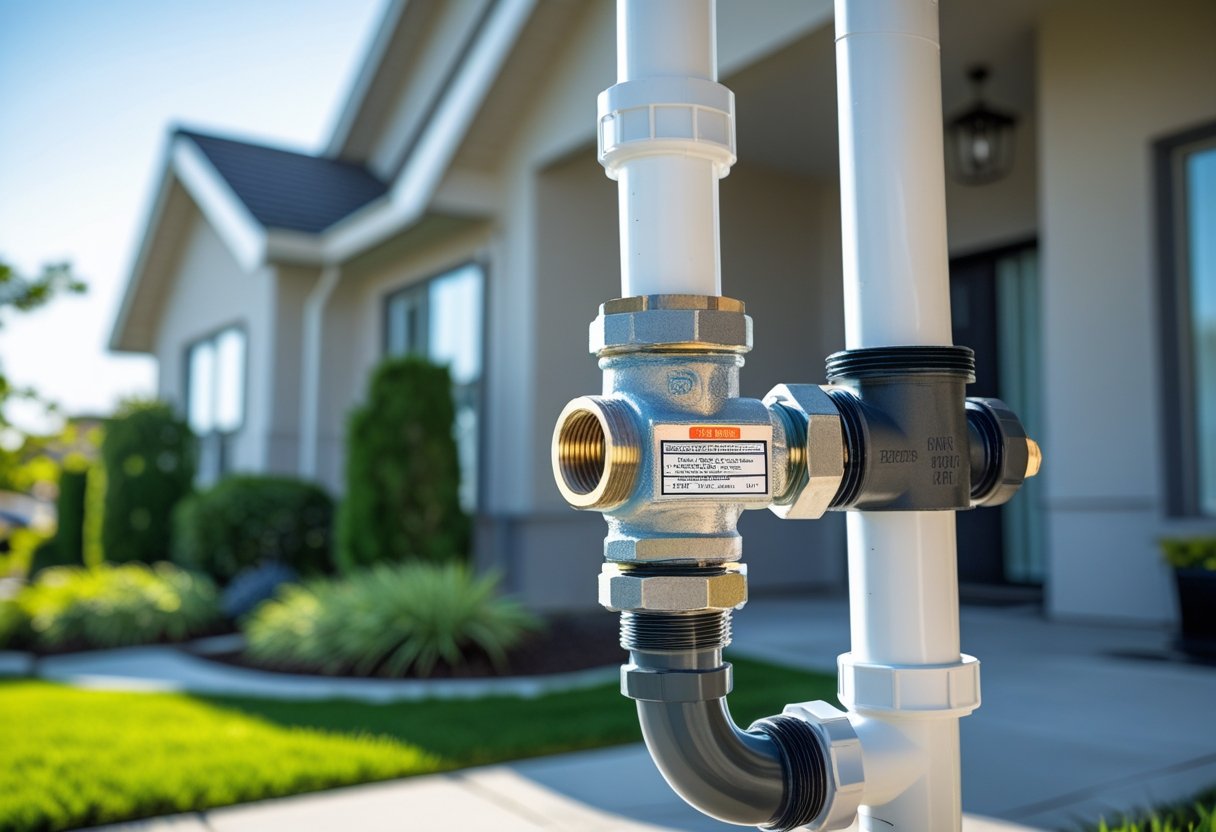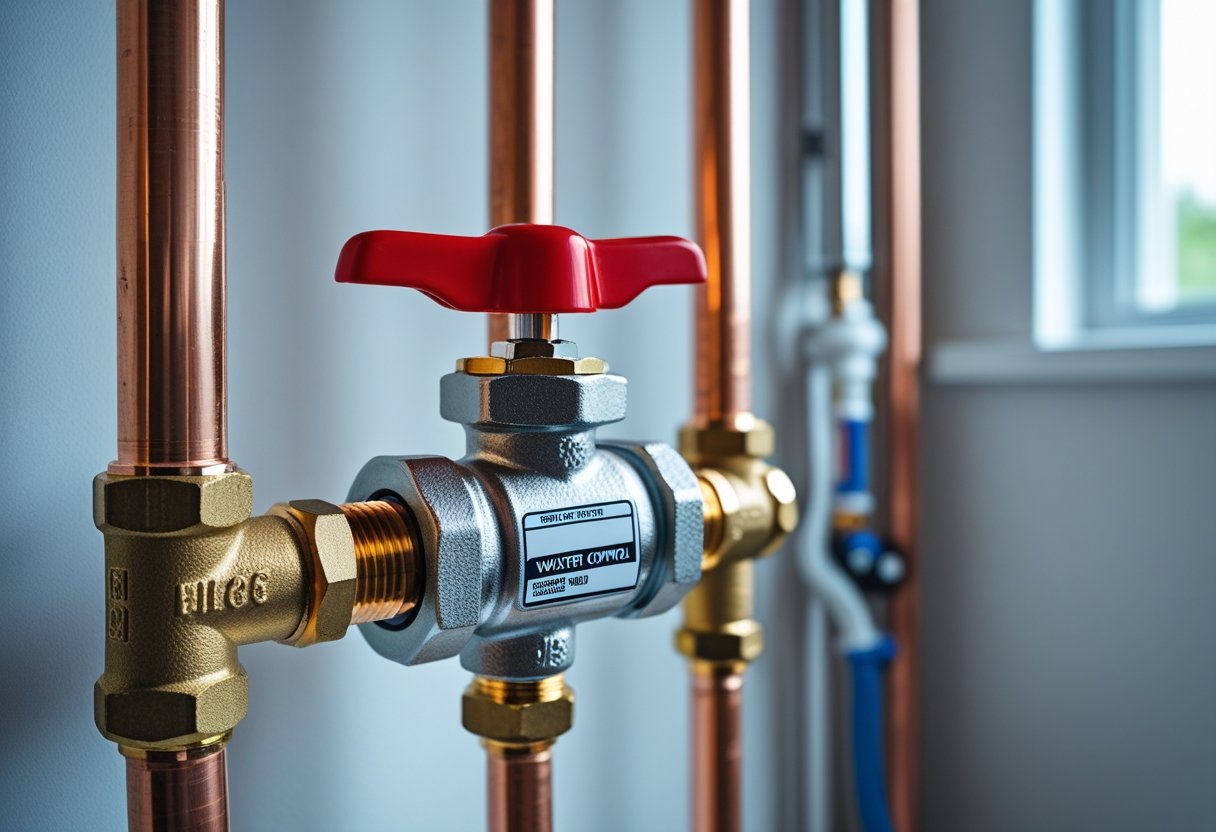If you live in San Diego County and get a backflow testing notice, you’ll want to know what it’s about and why it’s worth paying attention to. These notices are really just reminders that your backflow prevention device needs a yearly check to make sure it’s working and your water stays safe. Skip the test, and you might end up dealing with water contamination or even fines from the city.
Backflow testing protects your home or business by checking the gear that stops dirty water from sneaking back into your clean water. When you get a notice, it’s time to call in certified pros. Pacific Backflow, for example, has been around San Diego for ages and makes the whole process quick and painless.
If you know what the notice means and how testing works, you’ll save yourself a headache. Here’s a rundown of what to expect, how to get ready, and why timely backflow testing matters for your safety and peace of mind.
What Is Backflow Testing?
Backflow testing checks if your plumbing stops dirty or contaminated water from sneaking back into clean water lines. The process involves inspecting special devices that keep your drinking water safe. It helps to know how backflow happens, what devices are involved, and who actually needs these tests.
How Backflow Happens
Backflow is just water flowing the wrong way in your pipes. Maybe there’s a sudden pressure drop—like when a fire hydrant opens or a water main bursts.
When that happens, contaminated water from irrigation systems, pools, or who-knows-what can get sucked back into your clean water. That’s a real health hazard.
Backflow testing looks at the devices that are supposed to block this from happening. It’s all about making sure they’re up to the job.
Types of Backflow Devices
There are a few main types of backflow devices:
- Reduced Pressure Zone (RPZ) Valves: Heavy-duty, for high-risk spots.
- Double Check Valves: Common in homes or moderate-risk businesses.
- Pressure Vacuum Breakers (PVB): Usually on irrigation systems, guarding against pressure hiccups.
Each device has its own role in keeping water flowing the right way. Testing makes sure these things actually close tight and do their job.
Who Needs Backflow Testing
In San Diego County, most places with backflow devices have to get annual testing. Got an irrigation system? Sprinklers? Commercial or industrial property? You’re probably on the list.
If your property has anything that could cause backflow, it’s on you to get it tested every year. The city’s not kidding about this—it’s all about protecting the water supply.
Pacific Backflow handles certified testing and takes care of the paperwork too, so you don’t have to stress about compliance.
Understanding San Diego Backflow Testing Notices
When a backflow testing notice lands in your mailbox, it spells out what’s up with your device and what you need to do. The notice tells you why you need a test, gives you the details you’ll need, and lays out the deadline. If you know how to read it, you’ll avoid hassles and keep your water safe.
Why You Receive a Backflow Testing Notice
You get a backflow testing notice because local laws say your backflow device needs a check every year. This device is the barrier between your drinking water and any possible contaminants.
The notice is your nudge to get your device inspected. If you own a home or business in San Diego County, you’ve got to follow this rule or risk fines—or worse, health problems.
It’s the city or water district’s way of keeping tabs on everyone’s water safety. Your job? Respond on time and keep your water supply protected.
What Information Is Included on the Notice
A typical notice includes:
- Property address (where the backflow device is)
- Device details (type, model, serial number)
- Required action (like scheduling a test with a certified tester)
- Contact info (for questions or reporting)
- Instructions (how to submit your test proof)
This tells you exactly which device needs attention and where it is. You’ll also know who to call and what steps to take.
The notice breaks it down so you don’t get lost in the process.
How to Read the Compliance Deadline
The compliance deadline is the last day you can get your device tested and turn in the paperwork. They don’t mess around with this date.
Book your test early so you’re not scrambling. If your device flunks, you’ll want time for repairs before the deadline.
Miss the deadline and you might get fined or have water problems. Treat that date like a big deal—stick it on your calendar.
If you want less to worry about, companies like Pacific Backflow offer certified, fast testing and handle the reporting for you.
San Diego Regulations for Backflow Testing
San Diego says backflow devices need a yearly test to keep the public water safe. There are rules about which devices need testing, who can do it, and how results get reported. It’s all to protect your water and keep you in line with the law.
Local Ordinances and Requirements
Local rules require you to test your backflow device once a year. This isn’t just for businesses—homes count too. The whole point is to stop dirty water from sneaking back into the clean supply.
Your device has to meet city standards. Testing looks for leaks, damage, or anything that could let bad water through. If your device fails, you need to fix or swap it out fast.
You’ll get official notices telling you to schedule a test. Ignore them and you could get fined or even have your water cut off. And yeah, keep records—you might have to show them later.
Roles of the City of San Diego and Water Providers
The City of San Diego and your local water provider set the rules and deadlines. They collect test reports and track who’s following the rules.
The paperwork isn’t all on you. Certified testers—like Pacific Backflow—can do the inspection and file the reports. That way, you don’t have to worry about missing something.
Water providers can also help you figure out which devices are approved or how to take care of your equipment. Their job is to make sure everyone’s water stays clean, so they enforce the rules pretty strictly.
How to Respond to a Backflow Testing Notice
When you get a backflow testing notice, don’t wait around. Schedule a certified tester, get the inspection done, and keep the results for your records. Submit everything on time to avoid fines or losing water service.
Scheduling a Certified Tester
You’ll need a certified backflow tester for the yearly inspection. Only licensed pros know how to check if your device’s working right.
Call a trusted backflow service like Pacific Backflow—they cover all of San Diego County and offer quick, reliable testing. Book your test soon after you get the notice so you’re not cutting it close.
During the visit, the tech will test your device. If something’s wrong, they’ll tell you what needs fixing and what it’ll cost. Make sure your tester handles all the paperwork so you’re not left chasing forms.
Recordkeeping and Submitting Test Results
After the test, hang on to a copy of the results. Paper or digital—whatever works for you, just don’t lose it.
You’ll need to submit the results to the city or water district. Usually, your tester files the report, but double-check so you don’t get dinged for missing paperwork.
If you needed repairs, keep those records too, and make sure updated results get submitted. Staying organized and on time keeps your property in good standing.
Consequences of Ignoring Backflow Testing Notices
Ignore those backflow testing notices and you risk fines or even having your water shut off. Honestly, it’s more hassle and money than just staying on top of things.
Potential Fines or Penalties
Miss your backflow test or forget to submit results, and you’ll probably get fined by the San Diego water authority. The fines start out set, but if you keep ignoring them, they can pile up.
If you keep slipping, the penalties just get steeper. There might be extra admin fees too.
If you stick to annual testing and let Pacific Backflow handle the process, you’ll dodge these costs. Their testers make sure everything’s filed right, so you stay in the clear.
Water Service Interruptions
If you don’t comply, the water authority can cut or suspend your service. That’s not something you want to deal with.
Losing water even for a short time is a huge pain—think about cooking, cleaning, just living your life. It’s not worth the risk.
Keep up with your annual testing and handle repairs quickly if something’s wrong. That way, your water keeps flowing and stays safe.
Tips for Staying Compliant With Future Notices
Stay ahead of backflow testing by setting reminders and choosing a solid testing service. It’s the easiest way to avoid deadlines sneaking up or getting hit with fines.
Setting Up Annual Reminders
Miss a deadline, and you could face fines or even unsafe water. Set yearly reminders early—use your phone, a calendar app, whatever you actually check.
A lot of testing companies will remind you, too. They’ll send a heads-up before your due date so you’re not left guessing. A paper checklist or calendar on the fridge works for some folks, too.
When you get a notice, check the due date and add it to your reminders right away. Staying ahead is way easier than playing catch-up.
Finding Reliable Backflow Testers
Pick a trusted tester who knows San Diego’s rules inside out. Certified techs make sure your test counts and meets all the requirements.
Pacific Backflow’s been around for nearly 40 years. They file reports straight to the city for you, so you don’t have to mess with paperwork.
Ask testers how fast they work and what happens if your device fails. Good ones will be upfront about repairs and help you fix things quickly.
Always get a written report after each test. Keep it handy for future inspections or if you ever get audited.
Frequently Asked Questions
Get a backflow testing notice in San Diego? You’ll need to take action to stay compliant. Testing is routine, and only certified pros can do it. If you miss a test or ignore the rules, you could face penalties or even health risks.
What steps should I take upon receiving a backflow testing notice in San Diego?
Start by reaching out to a certified tester—someone like Pacific Backflow works well—to schedule your inspection. Don’t wait too long; you’ll want the test finished before the deadline in the notice. That way, you steer clear of any hassles or last-minute stress.
How often is backflow testing required in the San Diego area?
In San Diego, you’ve got to get your backflow device tested every year, whether it’s at home or at a business. This annual test helps make sure your device actually does its job and keeps your water safe. Honestly, it’s not something to skip.
Can you recommend any certified backflow testing services in San Diego?
Definitely. Pacific Backflow covers all of San Diego County, and their team’s certified for testing, repairs, installations, and even the paperwork. They’re pretty responsive, too, which is always a plus.
What happens if I don't comply with a backflow testing notice?
If you skip the test, the water district might hit you with fines or other penalties. On top of that, you could end up with legal trouble. And honestly, nobody wants to risk contaminated water at home or work.
What are the backflow prevention regulations specific to California?
California requires yearly testing and upkeep for all backflow prevention devices. Every water district needs a program to manage cross-connection risks and keep the water supply safe. It’s a bit of a hassle, but it’s for a good reason.
Is there a penalty for not completing backflow testing by the due date in San Diego?
Yeah, you could get fined or face penalties if you miss the testing deadline. Staying on top of testing and reporting helps you steer clear of those hassles and keeps your water system safe.











